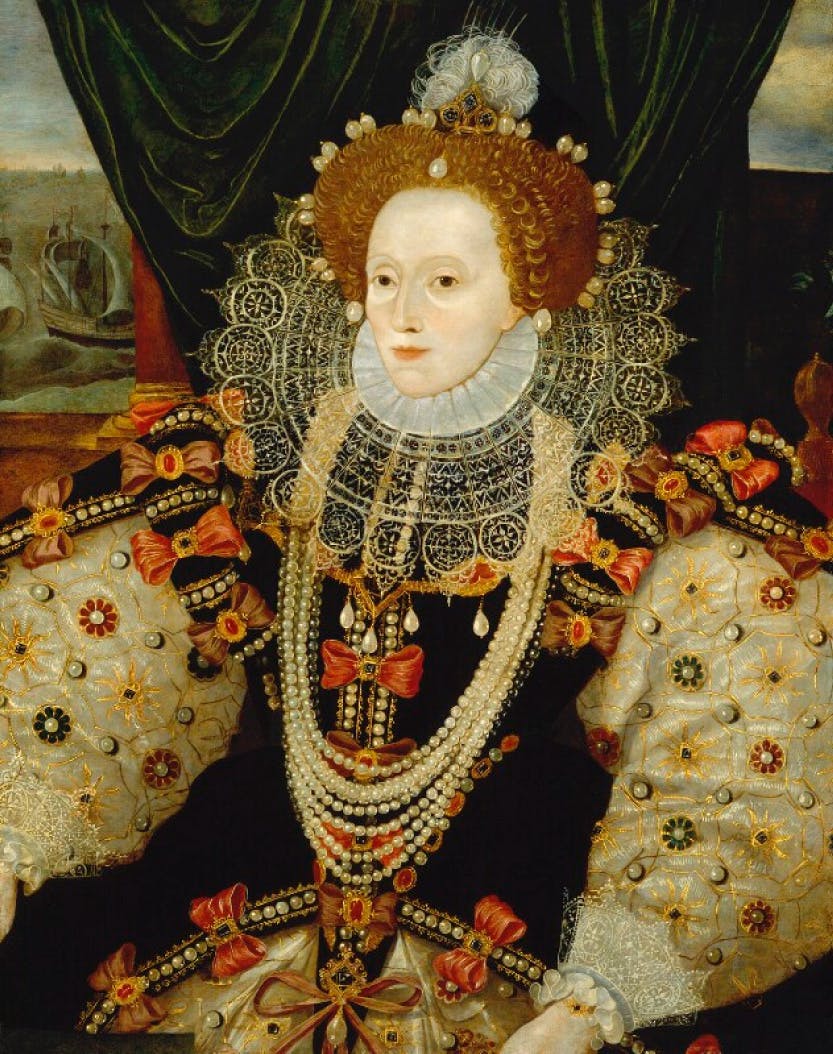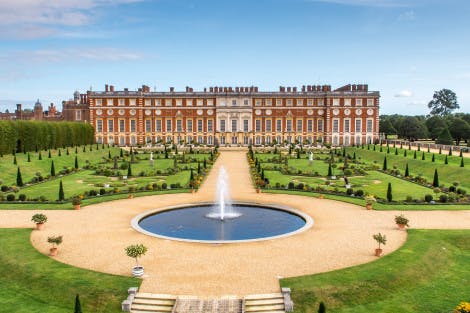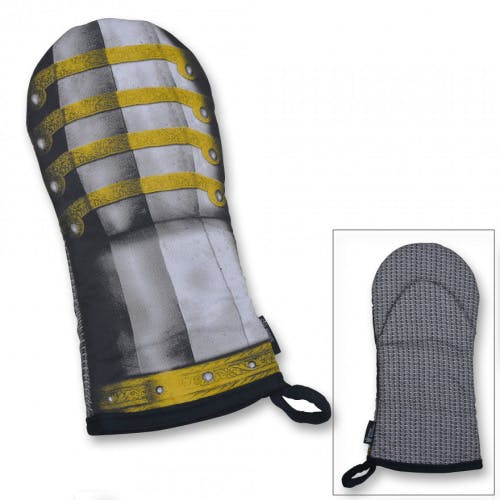
Was the Elizabethan period really a 'golden era' of English history?
During her long reign, Elizabeth I became a legend in her own lifetime. The Queen of the Elizabethan era was praised by poets and immortalised by artists as 'Gloriana', an immortal goddess sworn to protect a nation thriving in a cultural renaissance, the age of William Shakespeare. The Elizabethan period has been called a 'golden age'.
But how much of this can possibly be true? Did Elizabeth really avoid the religious turmoil and political division that blighted the reigns of her siblings, Edward VI and Mary I?
Header image: In 'Elizabeth I and the Three Goddesses', a painting owned by Elizabeth herself, Hans Eworth depicts the Queen in triumph over the goddesses Venus, Juno and Minerva. © Royal Collection Enterprises Ltd 2025 | Royal Collection Trust
When was the Elizabethan era?
The Elizabethan era is defined as the period of Elizabeth I’s reign. This took place between her accession on 17 November 1558 and her death on 24 March 1603.
Read more: Elizabeth I, the Last Tudor
The Elizabethan religious settlement
At the beginning of her reign, England’s new Queen Elizabeth I was outwardly tolerant and tactful. In 1559, just a year after her accession, the 'Elizabethan Settlement' offered a religious compromise. It confirmed the monarch's supremacy over a 'Church of England' as established by Elizabeth’s father Henry VIII, but retained much Catholic ritual from her sister Mary I’s reign.
Mary's councillors were retained at the heart of government, while Elizabeth did not rush into expensive foreign wars like her father. Instead, she cautiously promoted negotiation and peace.
It was not to last. The turning point came in 1570, when Pope Pius V excommunicated Elizabeth I, encouraging Catholics everywhere to rise up and depose the heretic Queen. The rest of Elizabeth's reign was bedevilled by plots and rumours of Catholic rebellion.

Image: Sir Francis Walsingham attributed to John De Critz the Elder. © National Portrait Gallery, London
Elizabeth's secret service
Francis Walsingham and the Catholic threat in England
Francis Walsingham, Elizabeth's secretary-of-state, embodied the darker side of the Elizabethan period in England. The Queen was fearful of conspiracy and her council felt the need to ensure the security of the Tudor government.
For Walsingham, defeating the Catholic threat became his priority. Jesuit priests, tending to Catholic families across England, were expelled: anyone found harbouring such a priest would be automatically guilty of a crime.
Imprisonment at the Tower of London, and torture in the name of national security, became a common fate for those discovered by Elizabeth's counter-terrorism network.
English Catholics had to make a choice: disobey the Pope, or break the law.
The execution of Mary, Queen of Scots
To seek out priests and traitors, Francis Walsingham constructed a network of spies. His biggest prize was Elizabeth's Catholic cousin Mary, Queen of Scots, who was under house arrest in England after fleeing Scotland. Mary became the focus for plotters charged with replacing Elizabeth with a Catholic ruler.
In 1586, Walsingham, having discovered the 'Babington Plot' to liberate Mary, fashioned an elaborate trap to ensnare her, letting the plot run its course until she revealed her support. Elizabeth, after much hesitancy, ordered Mary's execution, in the privacy of Fotheringhay Castle.
If the execution of Mary Queen of Scots in 1587 was meant to bring an end to Catholic conspiracy, it achieved the opposite effect. Mary was now a Catholic martyr.

Image: The inscription on the left, 'G G 1586' and the coat of arms and crest were carved by George Gifford, imprisoned in the Tower of London suspected of involvement in the Babington Plot to assassinate Elizabeth I, and put Mary, Queen of Scots on the English throne. The inscription on the right of an inverted horseshoe inscribed with the Latin for 'We adore thee, Blessed Lord', was carved by Thomas Peverel in 1537. © Historic Royal Palaces

Image: In the ‘Ditchley portrait’ by Marcus Gheeraerts, c1592, Elizabeth I towers above a map of England. Arguably, no other monarch in English history tied their identity so successfully to that of the nation itself. © National Portrait Gallery, London
The highs and lows of the Elizabethan period
A Renaissance revolution and cultural confidence
During Elizabeth's long reign, William Cecil, the Queen's chief minister, oversaw a mini industrial revolution in England. Immigrant workers from the war-torn Netherlands expanded the skilled workforce, and England became a self-reliant manufacturer of all manner of goods, from tin to lace, glass to soap. Land enclosures created grazing for profitable flocks of sheep.
The Bishop of Salisbury declared that never was England 'better in worldly peace, in health and body, in abundance of victuals'.
Elizabeth's court literally dazzled with exotic costumes and jewellery. Courtiers and merchants, enriched by trade, built spectacular 'prodigy houses' to display their wealth, with wings devoted to the occasional royal visit. And when Elizabeth did come to stay, ludicrously expensive entertainments were staged in her honour.
Thomas Tallis and William Byrd led a Renaissance revolution in music, while the composer and musician John Dowland made the lute a popular accompaniment for all festivities.
Perhaps most famously, William Shakespeare and Christopher Marlowe directed Elizabethan cultural confidence onto the stage.
Elsewhere, Walter Raleigh sponsored attempts to establish English colonies in North America, named 'Virginia' after the Queen. Although Raleigh himself never went to Virginia, he did sail to South America to investigate the possibility of colonisation in Guyana and Venezuela.
Francis Drake circumnavigated the globe between 1577-80, and Elizabethan England traded with Russia, Morocco and the Ottoman Empire.
John Hawkins and the trade of enslaved people
The Elizabethan era is often celebrated for the Queen's nurture of ambitious international trade. However, this policy had long-reaching and devastating consequences.
Most famously, John Hawkins was the first Englishman known to engage in the transatlantic trade in enslaved people. He began trading in enslaved people early in Elizabeth's reign and received the Queen's support for a considerable time afterwards.
In 1562-3 Hawkins acquired at least 300 enslaved people from West Africa and sold them in the Spanish colony of Hispaniola (now Haiti and the Dominican Republic) in the Caribbean. Elizabeth I initially condemned Hawkins' actions, labelling them 'detestable'. Sadly, this condemnation did not last. The Queen was ultimately impressed by Hawkins' profits and became a major investor in his future voyages. Elizabeth wrote letters to Spain in support of his endeavours and provided him with guns, supplies, and ships which sailed under her royal standard.
Elizabeth continued to favour John Hawkins long into her reign; he became an important English naval commander and served as Vice-Admiral during the Spanish Armada in 1588. He was knighted Sir John Hawkins, and his coat of arms included an image of an enslaved African man. While it would be 100 years before English merchants would traffic enslaved people in a systematic way, the seeds of that trade had been sown.

Image: King Philip II of Spain in 1586, from a contemporary engraving by Essarts. © Historic Royal Palaces
The Spanish Armada
The Spanish Armada is arguably one of the most famous events of the Elizabethan age. Indeed, whenever England has been threatened by foreign invasion, the spirit of Elizabeth's defiance against the Spanish Armada is often invoked.
By 1585, Spain was finally winning its long campaign in the Netherlands against the armies of the Protestant Dutch resistance. Its King, Philip II now looked across the sea to England.
Philip II's 'Enterprise of England' was not just a religious crusade but an attempt to bring an end to English piracy: the final straw came in 1587, when Francis Drake audaciously attacked the Spanish fleet in Cadiz harbour itself. Licensed by Elizabeth I to raid Spanish shipping, Drake had returned from South America laden with Spanish silver.
In 1588, Philip's armada of 130 ships tried to break through the English navy in the Channel. It was destroyed in the storm-tossed waters of the Irish Sea.
Elizabeth I’s Tilbury Speech
In the middle of the Spanish Armada crisis, Elizabeth I retained her political composure and gave an impassioned speech at Tilbury to inspire her troops. Now known as the Tilbury Speech, it is one of the most famous speeches in royal history. God listened, and the Spanish Armada was defeated.

Image: The official portrait commissioned to celebrate the defeat of the Spanish Armada in 1588. Elizabeth was not a ‘feeble woman’, but England’s 'sacred general'. © National Portrait Gallery, London
'I am come amongst you … in the midst and heat of battle to live and die amongst you all. To lay down for God, my kingdom and for my people, my honour and my blood even in the dust. I know I have the body of a weak and feeble woman, but I have the heart and stomach of a King!'
Elizabeth I's speech at Tilbury, 1586
The Elizabethan 'golden age'?
In the centuries after her death, Elizabeth I’s achievements have been recognised but also nostalgically inflated. The legend of Good Queen Bess, a virtuous ruler and heroic general became an unquestioned chapter of English history.
Indeed, the Elizabethan religious compromise helped spare England from the religious wars ravaging Europe; the stability instead nurtured a cultural renaissance and a burgeoning sense of national self-confidence.
But the last years of the Elizabethan era were beset by disagreements in her council and economic decline in the country.
The Elizabethan era may not have been truly golden, but as the country tore itself apart once again during the Civil War of the 1640s, many still alive to remember looked back with longing to the Elizabethan period of stability and domestic peace.
Listen to the podcast
Elizabeth I: The women who shaped a Queen
Elizabeth I was profoundly shaped by the women around her. In this series of the Historic Royal Palaces Podcast, Tracy Borman explores these pivotal relationships throughout her life.
Joining Tracy in this episode is Dr Nicola Tallis. We explore the young Elizabeth, before she came to the throne. The formative relationships she experienced during this time shaped the queen she would become; her mother Anne Boleyn, her stepmother Katherine Parr, and her sister Mary I.
More episodesMore Tudor history from our palaces

Henry VIII's lost gardens at Hampton Court
Explore Henry VIII's cherished garden retreat, through a collection of 16th-century treasures

Test your knowledge on Elizabeth I
Play the Royal History Quiz online
How much do you know about the Virgin Queen? Put your knowledge to the test with our fun quiz! Whether you are a history enthusiast or curious learner, the Royal History Quiz is your gateway to exploring the past. Take the challenge now and see if you have what it takes to wear the crown!
Browse more history and stories

Henry VIII's children
All three ruled England

Henry VIII’s wives: six queens, six women
These six queens consort all had one man in common. But is it possible to understand them as individuals, even after 500 years?

Robert Dudley
Prisoner, favourite and Earl of Leicester
Explore what's on

- Families
- Half term
- Things to see
February Half Term
Join a royal quest this half term with Elizabeth I at Hampton Court Palace.
-
14 – 22 February 2026
- 10:00-16:00
- Hampton Court Palace
- Included in palace admission (Members go free)

- Things to see
Hampton Court Gardens
Take time to explore and relax in these world-renowned gardens and find our free entry Garden Open Days dates.
- Open
- In line with palace opening hours
- Hampton Court Palace
- Included in palace admission (Members go free)

- Things to see
Pond Gardens
Discover the sunken gardens created for Henry VIII and transformed by Mary II.
-
Open
- In line with palace opening hours
- Hampton Court Palace
- Included in palace admission (Members go free)
Shop online

Shop Tudors
Find the perfect gift for collectors and history enthusiasts in our treasure trove of souvenirs inspired by this ever-fascinating dynasty.
From £3.00

Shop Goblets & Tankards
Discover our decadent range of goblets and tankards inspired by the palaces in our care, the perfect gift for any history fan.
From £10.00

Henry VIII Gauntlet Armour Oven Glove
This fun oven glove is inspired by a suit of armour made for Henry VIII in 1540, currently on display at the Tower of London.
£18.00
